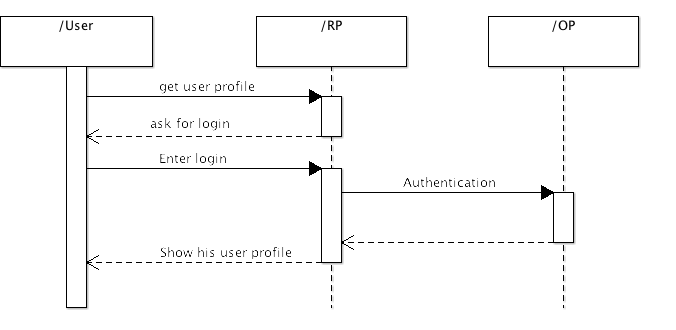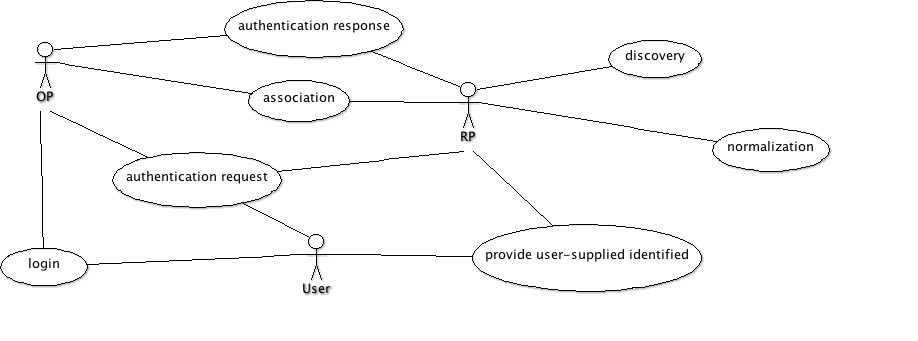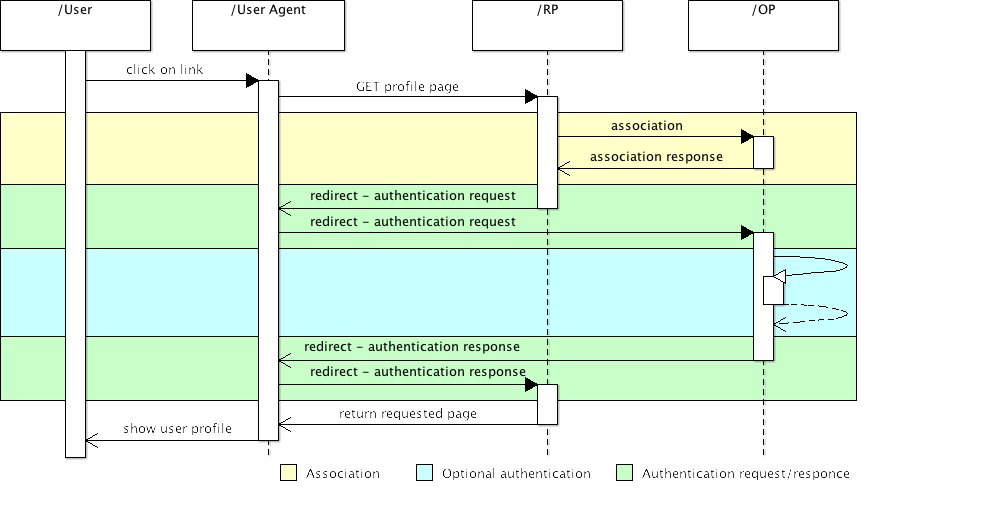OpenID - introduction
Authentication - high level
Authenticate use case usage
When user try to access some protected page as user profile on RP than RP have to get user's identity. RP ask user for entering some identifier. It could be OpendID of google email (when appropriate OpenID extension is used). Based on that identifier RP discover which server (OP) is responsible for managing this identity and ask this server (OP) to authenticate this identity. When OP positively authenticate user's identity than RP allows user to get requested page. This process in on next diagram.

Authentication - more details
Previously described use cases are here describe in more details.
Main use cases solved by library
Following diagram shows main use cases solved by library.

Use cases are described in order how they are invoked. OpenId protocol contain few other alternative flows but following one is most important.
- provide user supplied id - RP ask user to enter his 'user supplied id'. By definition it's URL or XRI, but extensions allows to understand email addresses.
- normalization - When RP accept 'user supplied ID' than it's have to adjusted to fit following process. This process include some basic string operations like removing/adding trailing slash. Result of this process is 'claimed id'.
- discovery - this process get information about OP that is responsible for given claimed id. Result of discovery process is XRDS document that describe OP. Usually it contains information which extension are available at this OP and what is technical end point for further communication.
- association - this process establish shared secret between OP and RP. This secret could be used for signing messages.
- authentication request - It's message send from RP via redirect to OP in which PR ask OP to confirm user's identity.
- authentication response - I't message send from OP via redirect to RP in which RP could confirm end user's identity.
Authentication request/response
It's key concept that allows user to get identity.
Following diagrams show situation when user access relaying party and provide his identification. Relaying party determine correct OpenId provider and redirect user there with authentication request. OpenId provider select corresponding user if this user is not logged in than ask for credential and perform login operation. Than OpenId provider create authentication response and send it back through redirect to relaying party. When relaying party get authentication response extract identity and verify signature with secret key.




